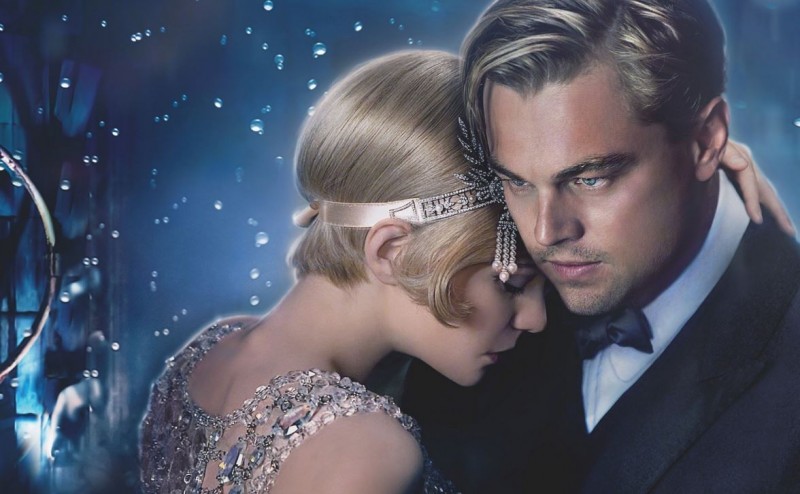
In F. Scott Fitzgerald's masterpiece "The Great Gatsby," the author weaves a captivating tale filled with rich symbolism. Set in the extravagant and turbulent Jazz Age, the novel explores themes of wealth, love, and the pursuit of the American Dream. Through the effective use of symbolism, Fitzgerald adds depth and layers of meaning to his characters and the narrative. This article will delve into the various symbols employed in "The Great Gatsby" and shed light on their significance in unraveling the story.
1. The Green Light: A Beacon of Hope
The novel introduces a recurring symbol: the green light at the end of Daisy Buchanan's dock. This shimmering green light represents Gatsby's dreams and aspirations, particularly his longing for Daisy. It symbolizes his hope for a future with her and the pursuit of his idealized vision of love and happiness.
2. The Valley of Ashes: Decay and Moral Corruption
Located between West Egg and New York City, the Valley of Ashes serves as a stark contrast to the glamour and opulence of the wealthy characters in the novel. Symbolically, it represents the moral decay and the consequences of the pursuit of wealth. The valley's desolate and ash-covered landscape signifies the emptiness and corruption underlying the glamorous facade of the wealthy elite.
3. The Eyes of Doctor T.J. Eckleburg: Moral Judgment
A pair of faded and billboard-sized eyes, attributed to Doctor T.J. Eckleburg, overlook the desolate Valley of Ashes. These eyes serve as a constant reminder of God's watchful gaze and moral judgment. They represent the loss of moral values and the corruption of the American Dream, as characters indulge in their desires without consequence.
4. Gatsby's Mansion: The Illusion of Wealth
Gatsby's extravagant mansion symbolizes the pursuit of wealth and the illusion it creates. While Gatsby's parties are legendary, his mansion is ultimately empty, lacking genuine love and connection. The grandeur of the mansion reflects the superficiality and hollowness of material success.
5. The Color White: Purity and Innocence
Throughout the novel, the color white is associated with Daisy Buchanan. It represents her facade of innocence, purity, and beauty. However, as the story unfolds, it becomes evident that Daisy's purity is merely an illusion, concealing her moral ambiguity and the consequences of her actions.
6. The Weather: Symbolic of Emotions
Fitzgerald skillfully employs weather to enhance the narrative's emotional impact. The frequent use of rain and storms represents moments of tension, conflict, and turmoil. Sunny and clear weather, on the other hand, signifies moments of happiness and serenity.
7. The Automobile: Symbol of Recklessness and Death
In "The Great Gatsby," the automobile symbolizes recklessness, excess, and death. The numerous car accidents throughout the story highlight the characters' impulsive behavior and their disregard for the consequences of their actions. The automobile serves as a metaphor for the destructive nature of the Jazz Age and its materialistic values.
8. The East and West Egg: Old Money vs. New Money
The geographical division of the novel into East Egg and West Egg represents the clash between "old money" and "new money." East Egg is home to the established wealthy class, while West Egg is inhabited by those who have recently acquired their wealth. This divide underscores the themes of social class, privilege, and the struggles faced by those who aspire to move up the social ladder.
9. The Clock: The Passage of Time
Symbolically, the clock in Gatsby's mansion represents the passage of time and the inevitable progression towards the future. Gatsby's desperate attempts to turn back time and recreate the past reflect his longing for a lost love and the impossibility of reliving past glories.
10. The Color Yellow: Wealth and Corruption
Yellow is a color often associated with wealth, but in "The Great Gatsby," it also symbolizes corruption and moral decay. From Gatsby's luxurious car to the extravagant parties, the color yellow represents the allure of material wealth and the negative consequences it can have on individuals and society.
F. Scott Fitzgerald's "The Great Gatsby" is a literary masterpiece that abounds with symbolic elements. Through the skillful use of symbolism, Fitzgerald conveys deeper meanings and commentary on the themes and characters in the novel. The green light, the Valley of Ashes, and the eyes of Doctor T.J. Eckleburg are just a few examples of the rich symbolism that adds layers of complexity to the story.
As readers unravel these symbols, they gain insight into the characters' motivations, the consequences of their actions, and the disillusionment of the American Dream during the Jazz Age. Fitzgerald's masterful storytelling and vivid symbolism make "The Great Gatsby" a timeless work of literature that continues to captivate and resonate with readers.
Exploring the Hottest Health and Diet Trends of the Year
Mortal Remains Of Ex-Kerala CM Oommen Chandy Taken To Kottayam
Dubai's prominent influencer and content creator, Ahmad Hussain, set for Bollywood debut